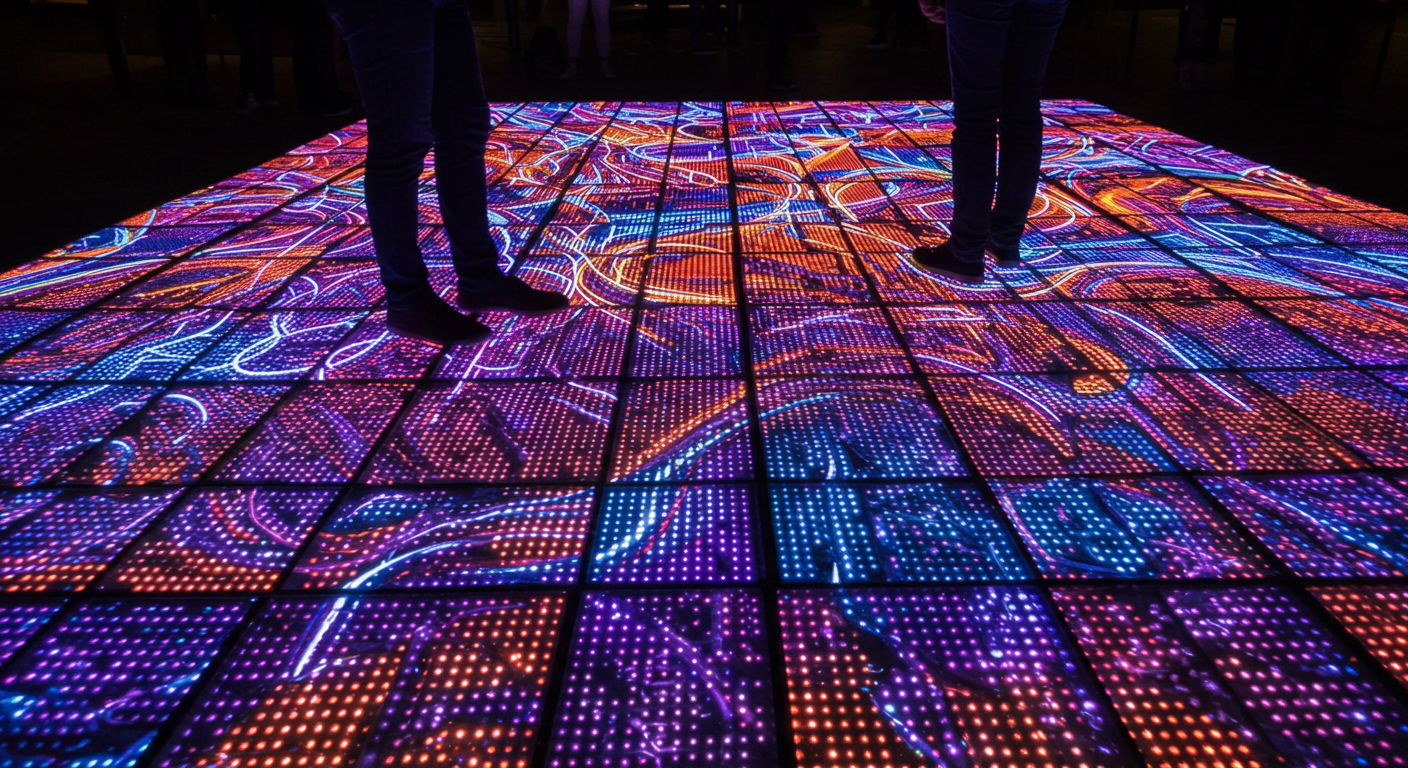There is a quiet revolution happening underfoot, in lobbies, museums, retail stores, and concert halls. It’s not in the architecture or the decor, but in the very ground we walk on. LED floor screens have transformed inert surfaces into living, breathing canvases that respond to our presence, turning passive spaces into interactive realms of wonder. This is not technology merely for spectacle; it is an invitation to step inside the story, to become not just an observer, but a character in a digital narrative unfolding beneath your soles.
Imagine entering a corporate atrium where, as you walk, ripples of light spread outward from each footstep, as if you’re treading on liquid glass. Or stepping into a children’s museum where cartoon fish dart away from your path, only to regroup behind you, curious and playful. In high-end boutiques, the floor might bloom with floral patterns as you approach a display, subtly guiding your attention without a single spoken word. These are not random effects; they are carefully choreographed experiences designed to delight, to surprise, to create moments of pure, wordless connection between human and environment.
The engineering behind these floors is as remarkable as the artistry. Each module is encased in shock-resistant, anti-slip acrylic, capable of bearing the weight of hundreds of people without flickering or failing. The pixels are calibrated for optimal brightness—not blinding underfoot, but vivid enough to capture attention even in brightly lit spaces. Installation is a feat of precision, requiring minimal structural modification, as individual tiles are transported and assembled like a giant, glowing puzzle. The result is a seamless expanse that feels less like a screen and more like enchanted ground.
What truly sets LED floors apart is their capacity for interactivity. Using pressure sensors, motion detectors, or even simple proximity triggers, the content can adapt in real time to the movement and position of people. A dancer on stage can summon trails of light with every leap. A shopper can trigger product information simply by standing near a display. A child can chase virtual butterflies across a museum floor, laughing as they scatter and regroup. This transforms the space from static to sentient, from passive to participatory.
The applications are as diverse as the imagination allows. In control rooms, floors can display real-time data flows or emergency alerts, turning the ground into a secondary information layer. At trade shows, exhibitors use them to draw crowds with dazzling, immersive brand experiences. In nightclubs, they sync with the music, turning the entire dance floor into a pulsating, rhythmic organism. Even in transportation hubs, they can guide passengers with glowing pathways or entertain waiting travelers with dynamic, ever-changing visuals.
But beyond utility and entertainment, there is poetry in this technology. It reminds us that the world around us doesn’t have to be fixed, that surfaces can be alive, responsive, and beautiful. It invites us to play, to explore, to engage with our environment in ways we never thought possible. In a world increasingly dominated by screens we hold in our hands or hang on our walls, the LED floor offers something profoundly different: a screen we inhabit, a story we walk through, a canvas we complete with every step. It is not just light underfoot; it is magic, waiting to be awakened by your presence.



